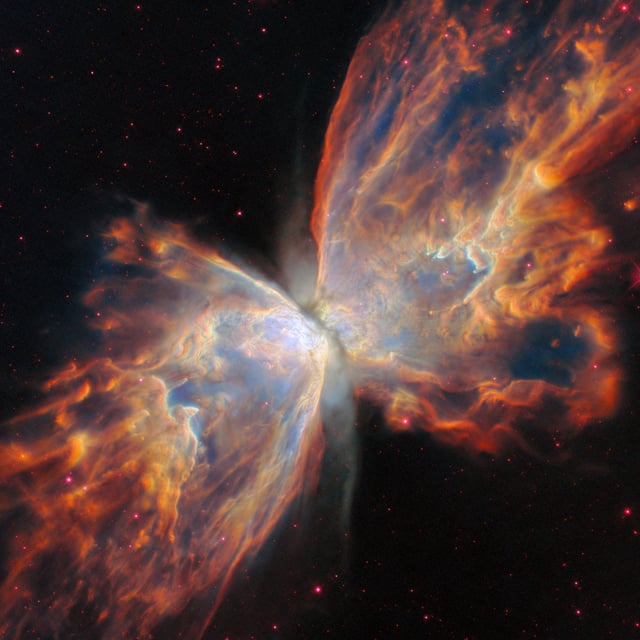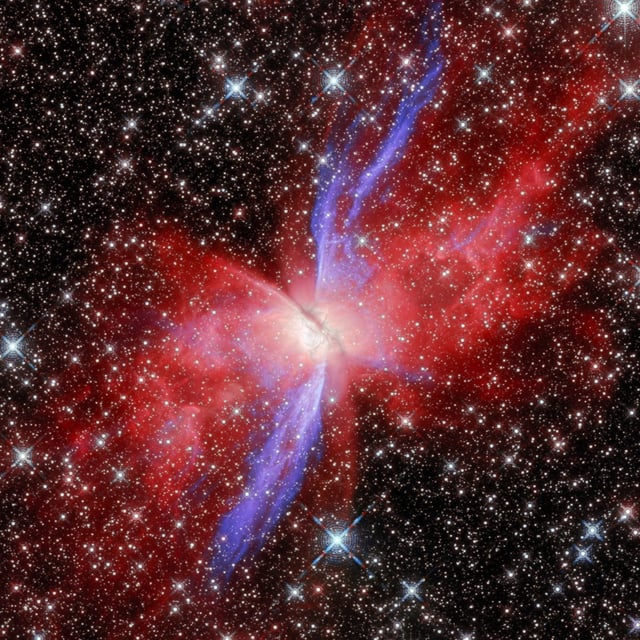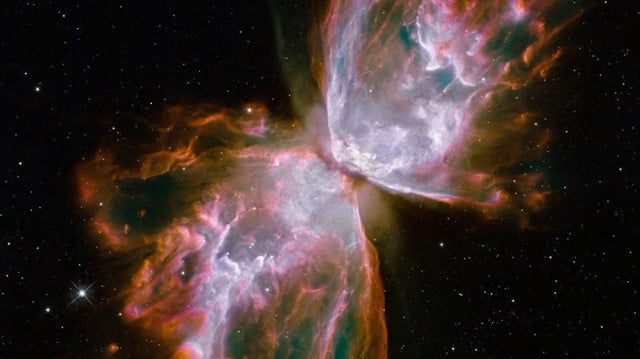Overview
- Webb’s integral‑field MIRI data, combined with ALMA, pinpoint the once‑elusive central star by its mid‑infrared‑bright dust cloud.
- The stellar remnant is about 220,000 K, among the hottest known in a planetary nebula, yet hidden by a nearly edge‑on dusty torus.
- Spectra resolve a crystalline‑silicate, large‑grain torus and a layered ionisation pattern, with iron and nickel tracing opposing jets.
- Researchers catalogued nearly 200 emission features, enabling the most detailed chemical and dynamical map yet of NGC 6302’s core.
- PAH signatures appear where a wind‑blown bubble meets surrounding gas, likely marking the first such formation in an oxygen‑rich nebula and offering clues to planet‑building dust.


